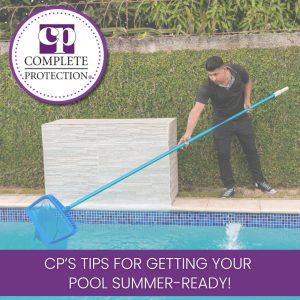The Ultimate Guide to Pool Maintenance

Owning a pool is one of life’s greatest pleasures. It’s a place for relaxation, exercise, and fun. However, maintaining a pool can be daunting if you don’t know where to start. With proper care and regular upkeep, your pool can remain a sparkling oasis. Here’s a comprehensive guide to pool maintenance that covers all the essentials.
1. Skimming and Brushing
Skimming Debris: Leaves, insects, twigs and other debris can quickly accumulate on the surface of your pool. Daily skimming with a net helps to keep the water looking pristine and helps prevent these items from sinking and clogging your filter.
Scrubbing the Sides: Algae and grime can build up on the pool walls and floors, leading to unsightly stains and slippery surfaces. Scrubbing the sides of the pool with a brush at least once a week helps to prevent algae growth. Use a brush suitable for your pool’s surface—nylon for tile or vinyl, and stainless steel for concrete pools.
2. Balance Water Chemistry
pH Levels: The pH level of your pool water should be between 7.2 and 7.8. This range ensures that the water is comfortable for swimmers and that the chlorine is working effectively. Test your pool’s pH level twice a week using a testing kit.
Chlorine Levels: Chlorine is essential for sanitizing the pool water and killing harmful bacteria. Maintain a chlorine level of 1.0 to 3.0 ppm (parts per million). You can add chlorine manually, use a chlorinator, or opt for saltwater chlorination systems.
Alkalinity and Calcium Hardness: Alkalinity acts as a buffer for pH levels, preventing rapid changes. Keep alkalinity between 80-120 ppm. Calcium hardness should be maintained between 200-400 ppm to avoid corrosion of pool equipment and scaling on surfaces.
3. Filtration and Circulation
Running the Pump: Your pool’s pump should run long enough each day to filter all the water at least once. This typically means running the pump for 8-12 hours a day during the swimming season. This circulation helps distribute chemicals evenly and keeps water crystal clear.
Cleaning the Filter: Clean your filter every 4-6 weeks or when the pressure gauge indicates it’s needed. There are three types of pool filters: sand, cartridge, and diatomaceous earth (DE). Each type requires different maintenance:
Sand filters: Backwash the filter once the pressure gauge reads 8-10 psi over the normal starting pressure.
Cartridge filters: Clean the cartridges with a hose every 2-6 weeks and replace them when they show signs of wear.
DE filters: Backwash and add new DE powder every 4-6 weeks.
4. Shock Treatments
Even with regular chlorination, pools need occasional “shocking” to eliminate contaminants. Shocking your pool involves adding a high dose of chlorine to eliminate contaminants that regular chlorination cannot handle. It’s recommended to shock your pool every 1-2 weeks, after heavy use, or after a rainstorm. Follow the manufacturer’s instructions on the shock product, and make sure to test the water before allowing anyone to swim.
5. Winterizing
If you live where temperatures drop significantly winterizing, which prevents freeze damage that can lead to costly repairs, is crucial. Before closing your pool for the winter, clean it thoroughly, and balance the water chemistry. Lower the water level below the skimmer, add winterizing chemicals, and cover the pool with a winter cover. You should store removable equipment such as ladders and skimmer baskets in a dry place. If you live in an area with freezing temperatures, ensure that the pump, filter, and heater are drained to prevent damage.
Regular pool maintenance might seem like a huge task, but it is crucial for keeping your pool in top condition. By dedicating a little time each week and following these guidelines, you can ensure that your pool remains a safe and inviting place for you and your family. With consistent routine care, your backyard oasis will always be ready for a refreshing swim. Happy swimming!
